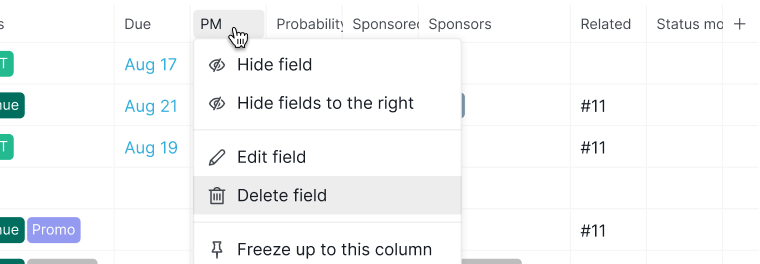Custom Fields
Overview
Custom fields allow you to add specific and customized information to your task. There are already some primary fields for each task such as assignees, dates, tags and description, but you can customize more fields by accessing the field type options from the dropdown menu.

In the Free subscription plan, you can create one custom field for each project. Upgrade your subscription plan to add more custom fields. More information can be found on our pricing page.
Add fields
There are several ways to add a custom field to your tasks. You can navigate to the detail panel of a task first and click +Add or edit field.
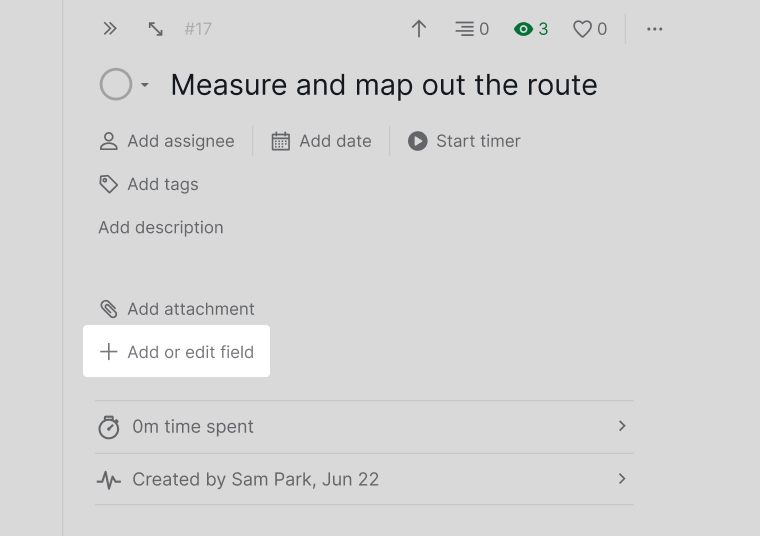
Or you can navigate to the Table view and choose +Add a new field from the options menu accessed by clicking on the + icon located at the right edge of the table.

You can also access this feature by clicking on the dropdown menu arrow located next to your project name at the top, then selecting Edit fields.
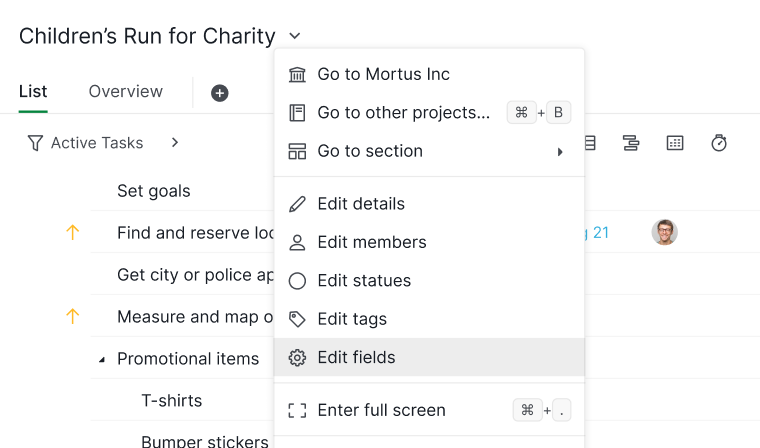
Then select +Add a new field and it will bring up a dialog to enter the custom field information and let you select the field type.
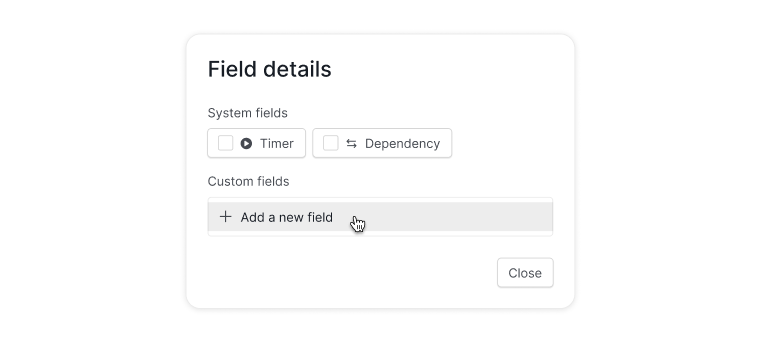
Note: Field names cannot contain the following characters: quotation marks ", backslash \ and curly brackets { }.
Supported field types in Quire
Here are all the different types of fields that you can add to your list of tasks.
- Text: You can choose between two different formats of texts: a single line of texts or a multiple-lined paragraph.
- Number: You can choose between two formats: numbers or percentages. This is useful for leftover stock numbers, etc.
- Currency: Currency format. You can edit the currency symbol to how you would like it. This is useful if you want to add the budget or cost for your task, etc.
- Date: Allows you to choose a date from the date picker. You can choose to include the time as well. This is useful for entering a specific date and timestamp for your task.
- Duration: Allows you to add a string of hh:mm:ss.
- Selection: A menu of options that you can add to your task. You can choose to allow multiple selections or only one at a time.
- Checkbox: A checkbox to indicate if the task is finished or not.
- User: A list of the project members for you to choose from. You can also choose to allow multiple members at a time.
- Attachment: Allows you to attach different files or images to the tasks.
- Email address: You can enter an email address and it will launch your local email client when clicked.
- Task: You can refer to another task or multiple tasks in the project.
- URL: You can enter a link to a website and it will direct you to the site when clicked.
- Formula: You can do calculations or call out specific information based on other information of your tasks.
Edit fields
There are multiple ways to edit a custom field. One way is to access the detail panel of a task and select +Add or edit field.
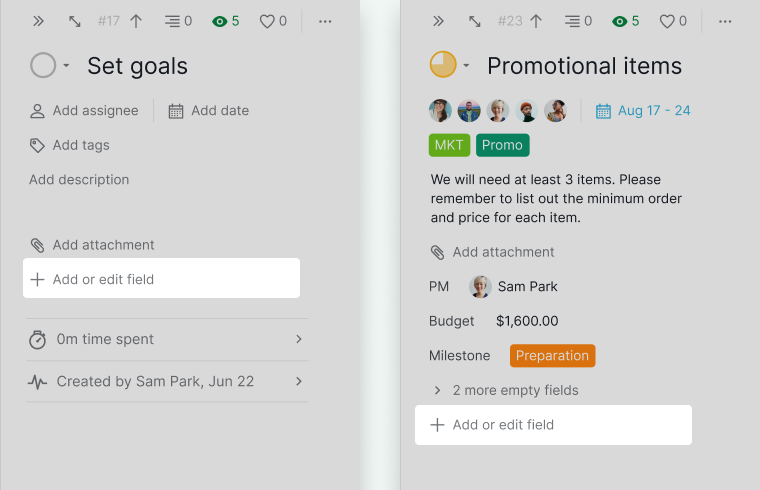
Or you can click on the dropdown menu arrow located next to your project name at the top and then choose Edit fields.

It will bring up a dialog of all the custom fields you have created. Hover over the field and click on the More Options icon to edit.
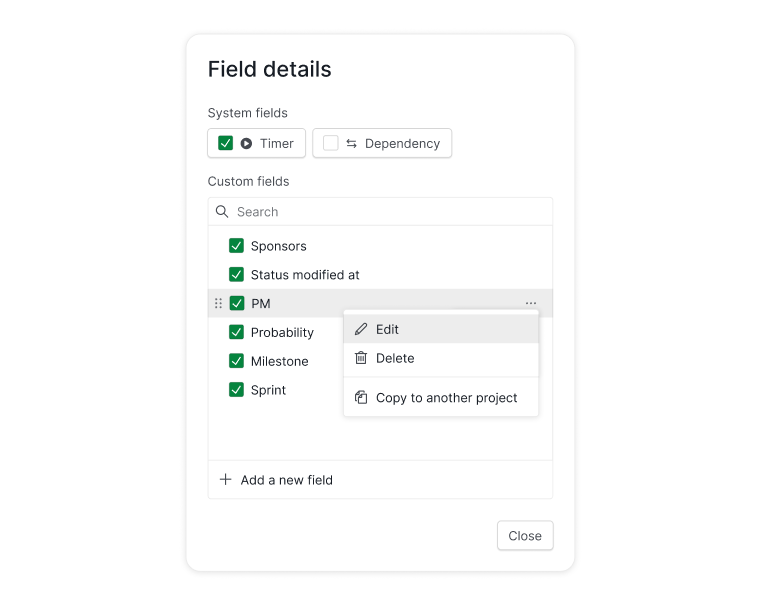
If you are in the Table view, you can click on the field name at the column header and select Edit field to edit that particular field.

Add conditional colors for custom fields
You can color-code the custom field results based on conditions that are defined by you. The fields that meet the rules will automatically receive the specified color.
Note: Setting conditional formats are currently only available for Date, Number, Currency, Duration and Formula custom fields type.
When adding or editing a custom field, click Add a new condition to create your own conditions.
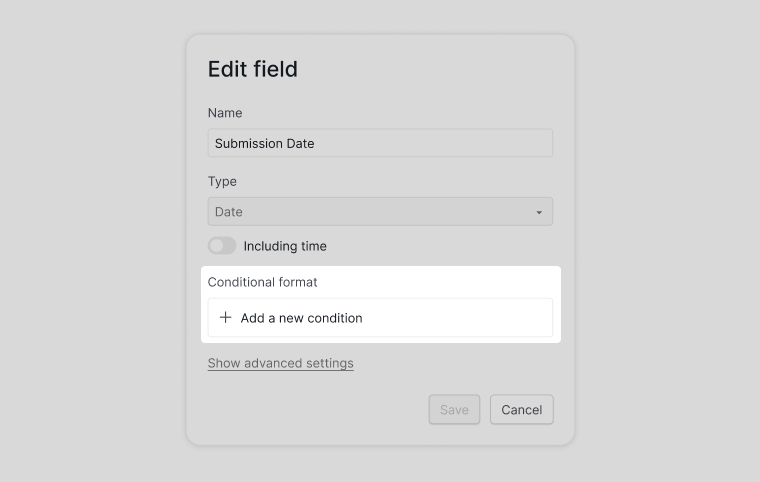
Enter the conditions and choose the colors. Remember to click Save after entering all the conditions.
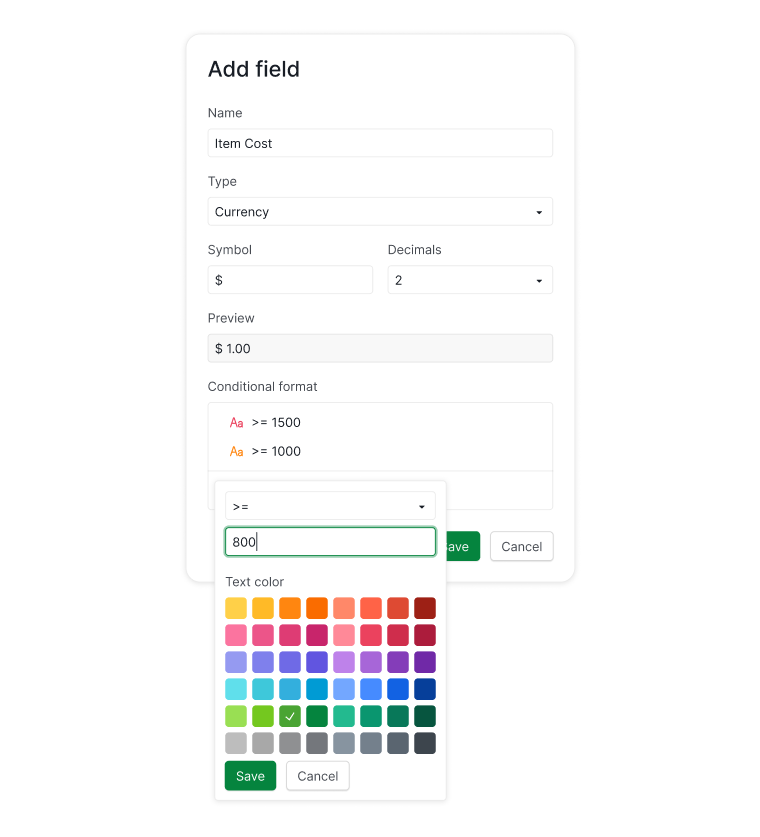
Note: The colors will be applied to the field results based on the order of the conditions. The condition that is placed at the top will be applied to the field results first. You can drag and drop the conditions by clicking on the six-dotted icon in front of the conditions to rearrange the order.

To set the conditional colors for the Formula type, click the Format tab. After selecting the format for your formula results, you can click Add a new condition to set up the different conditions to color-code your formula results.
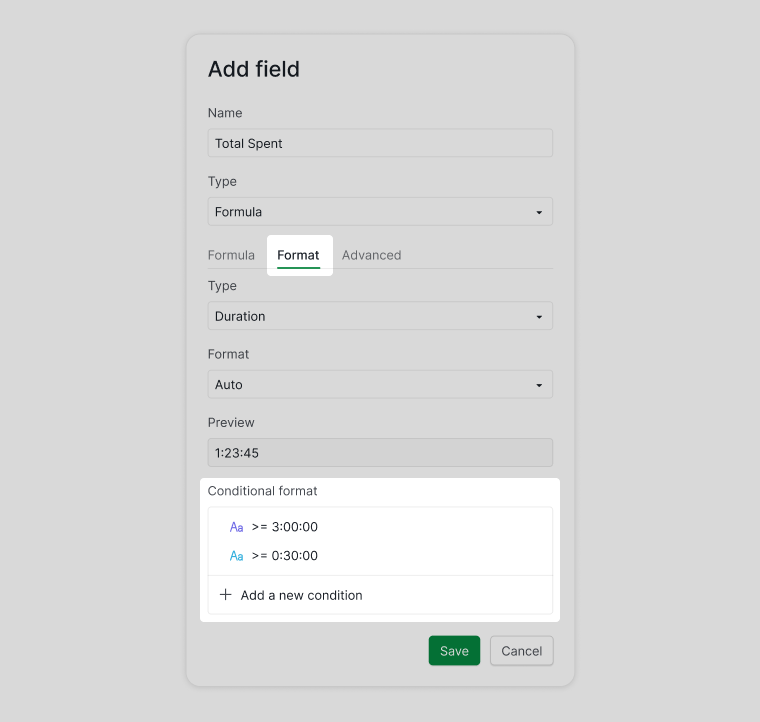
Advanced settings for custom fields
If there are any custom fields that you prefer not to be visible to “Guests” in your project, you have the option to set the permission to hide them when adding or editing the field. The option can be found in the Advanced settings section.

Learn more about the project member ‘Guest’ permission here.
For recurring or duplicated tasks, if you prefer not to duplicate fields along with the tasks, you can adjust this setting in the Advanced settings when adding or editing new custom fields.
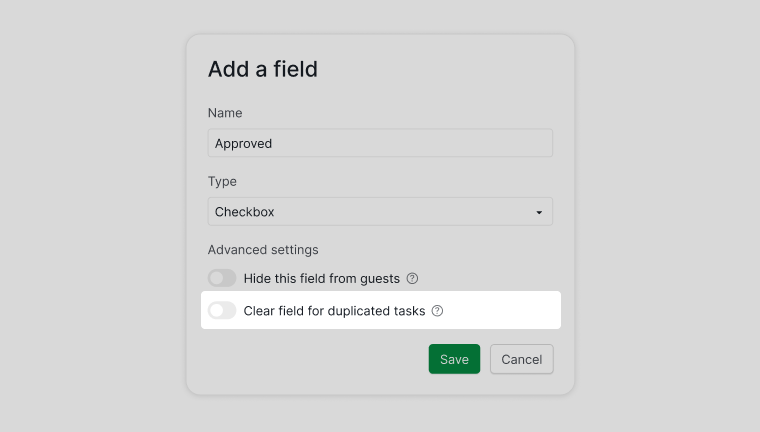
Show or hide a field
You can select the fields that you want to show or hide in the detail panel by clicking on +Add or edit field. Click on the checkboxes to either show or hide the existing fields in your detail panel.
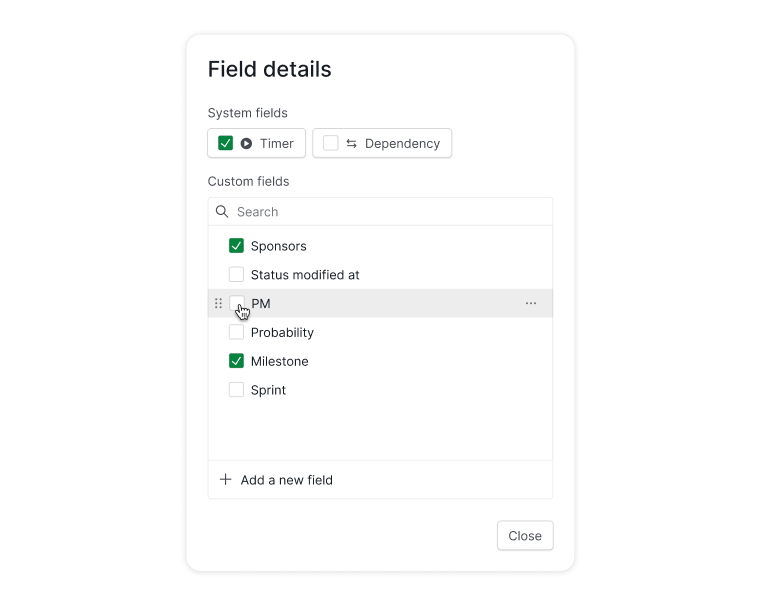
If you are in the Table view, you can go to the + icon at the right edge of the table to toggle on and off the fields you would like to see.
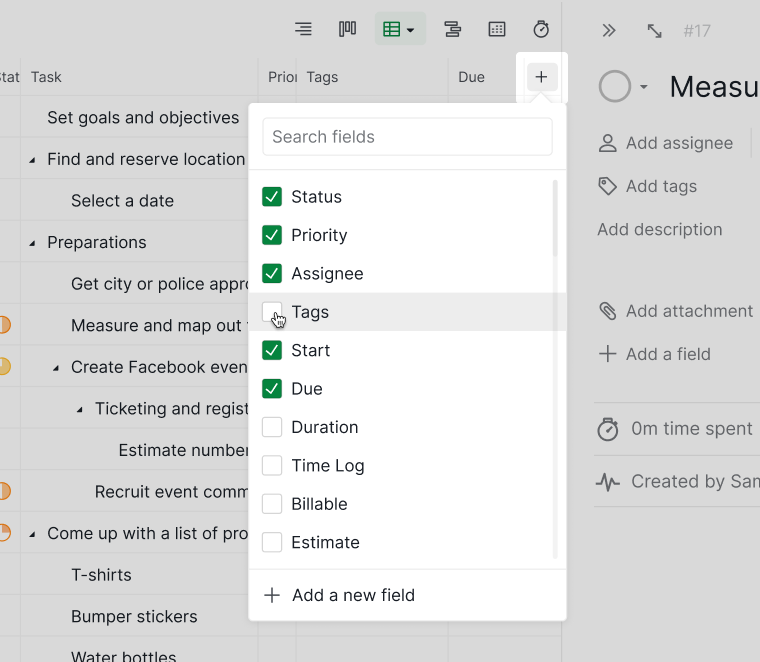
Another way is to click on the field name at the column header and select Hide field to hide the column one by one.

Rearrange the field order
To rearrange the order of your custom fields in the detail panel, begin by selecting +Add or edit field. This will prompt a dialog displaying all your created custom fields. From there, you can drag the six-dotted icon to move the custom field up or down as needed.
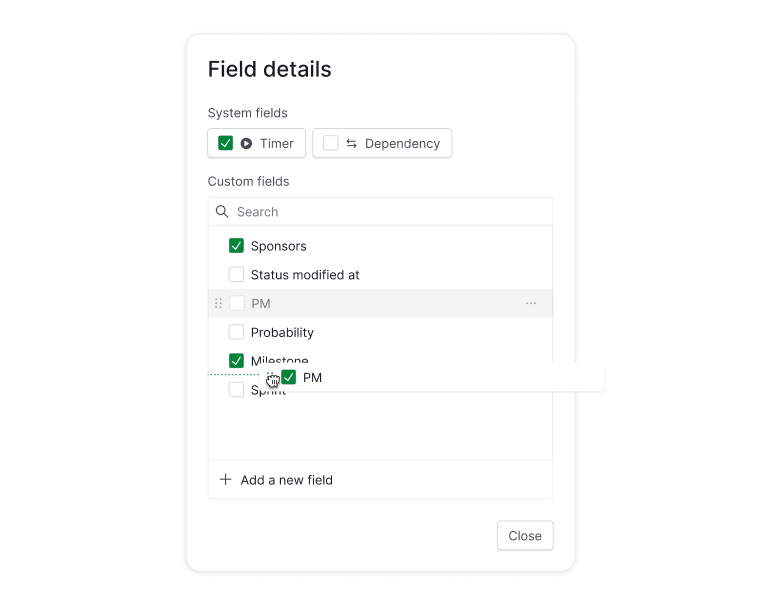
Copy custom fields to another project
Setting up a custom field for each project individually can be quite cumbersome. If you find that the custom fields you’ve created are necessary in multiple projects, there’s a straightforward solution: you can simply duplicate the existing one into other projects.
To do so, navigate to the detail panel and click on +Add or edit field. This action will open a dialog showcasing all your created custom fields. Simply hover over the custom field, click on the More Options icon, and then choose Copy to another project. In the next dialog, select the project where you want to replicate the field.
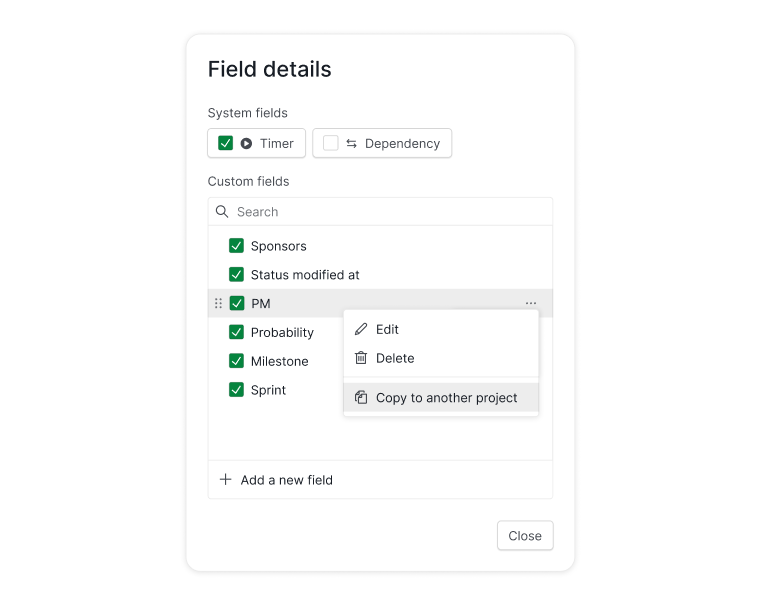
Tip: If you need to copy multiple fields simultaneously, you can use the batch operation feature.
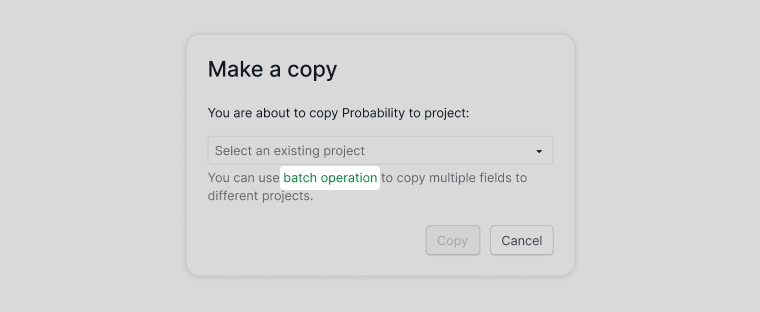
You can also access this feature by clicking on the dropdown menu arrow location next to your project name at the top, and then choosing Edit fields.

Once in the field editing interface, hover over the custom field and click on the More Options icon, then select Copy to another project. Follow the prompts to complete the steps of duplicating your custom fields to another project.
Delete fields
There are several ways to delete a custom field. You can open the detail panel of a task and click +Add or edit field.

Or you can click on the dropdown menu arrow next to your project name at the top and select Edit fields.

It will bring up a dialog of all the custom fields you have created. Hover over the field and click on the More Options icon to delete.
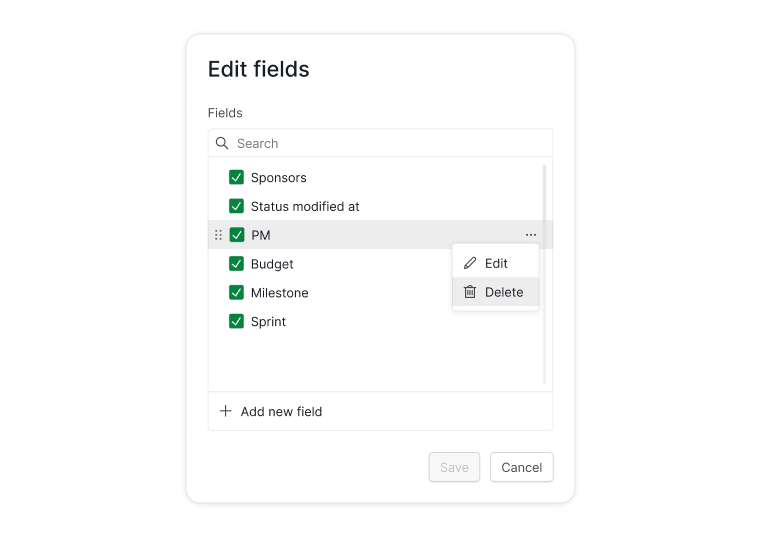
If you are in the Table view, you can click on the field name at the column header and select Delete field to delete that particular field.
